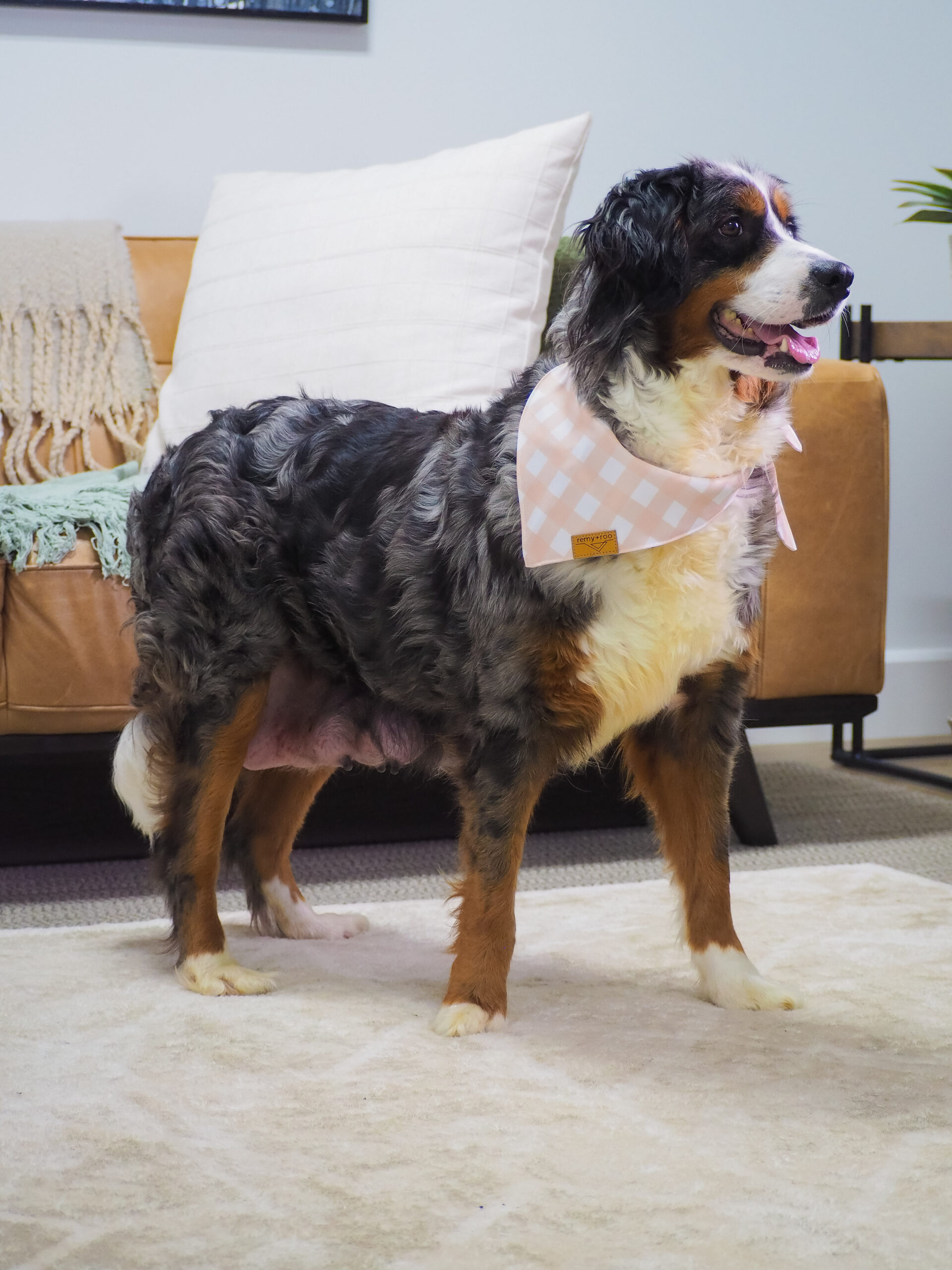
How to Handle a Bernedoodle’s Separation Anxiety at Night
Bernedoodles are known for their affectionate and social nature, making

Bernedoodles are known for their affectionate and social nature, making them wonderful companions. However, their strong bond with their owners can sometimes lead to separation anxiety, especially at night. If your Bernedoodle struggles with being left alone overnight, it’s important to implement effective strategies to ease their distress and encourage independent sleeping habits.
In this guide, we’ll explore the signs of nighttime separation anxiety, possible causes, and actionable steps to help your Bernedoodle feel secure and calm when sleeping alone.
Understanding Bernedoodle Separation Anxiety at Night
Separation anxiety occurs when a dog becomes overly distressed when left alone. At night, this can manifest in various ways, including:
• Excessive whining or barking
• Pacing, restlessness, or panting
• Destructive behavior (scratching doors, chewing bedding, etc.)
• Attempts to escape confinement
• Refusing to settle or sleep without human presence
Recognizing these symptoms early is crucial for preventing long-term anxiety-related behaviors
Causes of Nighttime Separation Anxiety in Bernedoodles
Several factors can contribute to your Bernedoodle’s nighttime distress, including:
1. Strong Bond with Owners
Bernedoodles are naturally people-oriented dogs and may feel anxious when separated from their favorite humans.
2. Change in Routine
A sudden shift in sleeping arrangements, a new home, or changes in household members can trigger anxiety.
3. Lack of Independence Training
If your Bernedoodle has always been allowed to sleep in your room or bed, transitioning to independent sleeping can be challenging.
4. Overstimulation or Insufficient Exercise
A dog that hasn’t had enough physical or mental activity during the day may struggle to settle down at night.
5. Fear of the Dark or Loneliness
Some dogs develop anxiety due to unfamiliar nighttime noises or the feeling of being alone.
How to Help Your Bernedoodle Overcome Nighttime Separation Anxiety
Addressing nighttime separation anxiety requires patience, consistency, and positive reinforcement. Here’s how you can help:
1. Create a Comfortable Sleeping Space
• Choose a designated sleeping area that is quiet, cozy, and secure.
• Use a comfortable dog bed with familiar blankets to provide a sense of security.
• Place a nightlight nearby if your dog seems fearful of darkness.
2. Establish a Calming Nighttime Routine
• Consistent bedtime routine: Follow the same steps each night to signal bedtime.
• Calm pre-bedtime activities: Avoid high-energy play right before bed—opt for gentle
petting or soothing commands.
• Limit food and water intake before bed to prevent frequent waking.
3. Encourage Independence Training
• Gradually transition your Bernedoodle to sleep independently.
• Start by placing their bed near yours, then slowly move it farther away over time.
• Use positive reinforcement (treats and praise) when they settle in their own space.
4. Provide Comforting Aids
• Use a white noise machine or calming music to block out unfamiliar nighttime sounds.
• Try an anxiety-reducing dog blanket or shirt for added security.
• Consider a comforting chew toy or stuffed animal with your scent.
5. Implement Crate Training (If Suitable)
• Crates can provide a safe and den-like environment for sleeping.
• Make the crate inviting with soft bedding and toys.
• Train gradually—start with short crate sessions during the day before extending to
overnight use.
6. Reward Calm Behavior
• Ignore attention-seeking behaviors like whining (as long as they are not due to distress or potty needs).
• Reward your dog in the morning if they sleep calmly through the night. 7. Ensure Adequate Exercise and Mental Stimulation
• Engage in daily walks, training, and play sessions to release excess energy.
• Provide puzzle toys or enrichment activities before bedtime.
What NOT to Do When Addressing Nighttime Anxiety
❌Do not punish your dog for whining or barking – This can increase their anxiety and
damage trust.
❌Avoid sudden changes in sleeping arrangements – Gradual transitions are more effective.
❌Don’t reinforce anxiety by giving in immediately – If your dog cries for attention and you respond instantly, they will learn that whining brings rewards.
❌Avoid overstimulating your dog before bed – Keep pre-sleep activities calm and relaxing.
When to Seek Professional Help
If your Bernedoodle’s separation anxiety at night does not improve with training or worsens over time, consult a professional dog trainer or veterinarian. Severe anxiety may require:
• Behavioral training sessions to help build confidence and independence.
• Veterinary evaluation to rule out medical causes of distress.
• Anxiety medication or supplements (prescribed by a vet) in extreme cases.
FAQs About Bernedoodle Nighttime Separation Anxiety
1. Should I let my Bernedoodle sleep in my bed?
This is a personal choice, but if your goal is to encourage independent sleeping, it’s best to provide a separate bed for your dog.
2. How long does it take to train a Bernedoodle to sleep alone?
Most dogs adjust within a few weeks, but the timeline varies depending on consistency and individual temperament.
3. Is crate training necessary to reduce nighttime anxiety?
Not always, but some dogs feel safer in a crate. Others may prefer a dog bed in a quiet, secure space.
4. Can Bernedoodle puppies outgrow nighttime anxiety?
Yes! With patience and training, most puppies become more comfortable sleeping alone over time.
5. What if my Bernedoodle wakes up frequently at night?
Ensure they are getting enough exercise, follow a consistent routine, and consult a vet if frequent waking persists.
Final Thoughts
Managing nighttime separation anxiety in Bernedoodles takes time, consistency, and positive reinforcement. By creating a comforting sleep environment, following a structured bedtime routine, and gradually fostering independence, you can help your Bernedoodle feel secure and relaxed when sleeping alone.
With patience and the right training methods, your Bernedoodle will learn to settle comfortably at night, leading to better rest for both you and your furry friend!

Bernedoodles are known for their affectionate and social nature, making

Morning: The Bernedoodle Puppy (8 Weeks – 1 Year) As

Bernedoodles are known for their lovable personalities, adorable looks, and

Feeding your Bernedoodle the right diet is one of the

Mini Bernedoodles, a charming mix of a Bernese Mountain Dog

When choosing a new furry friend, allergy concerns often top